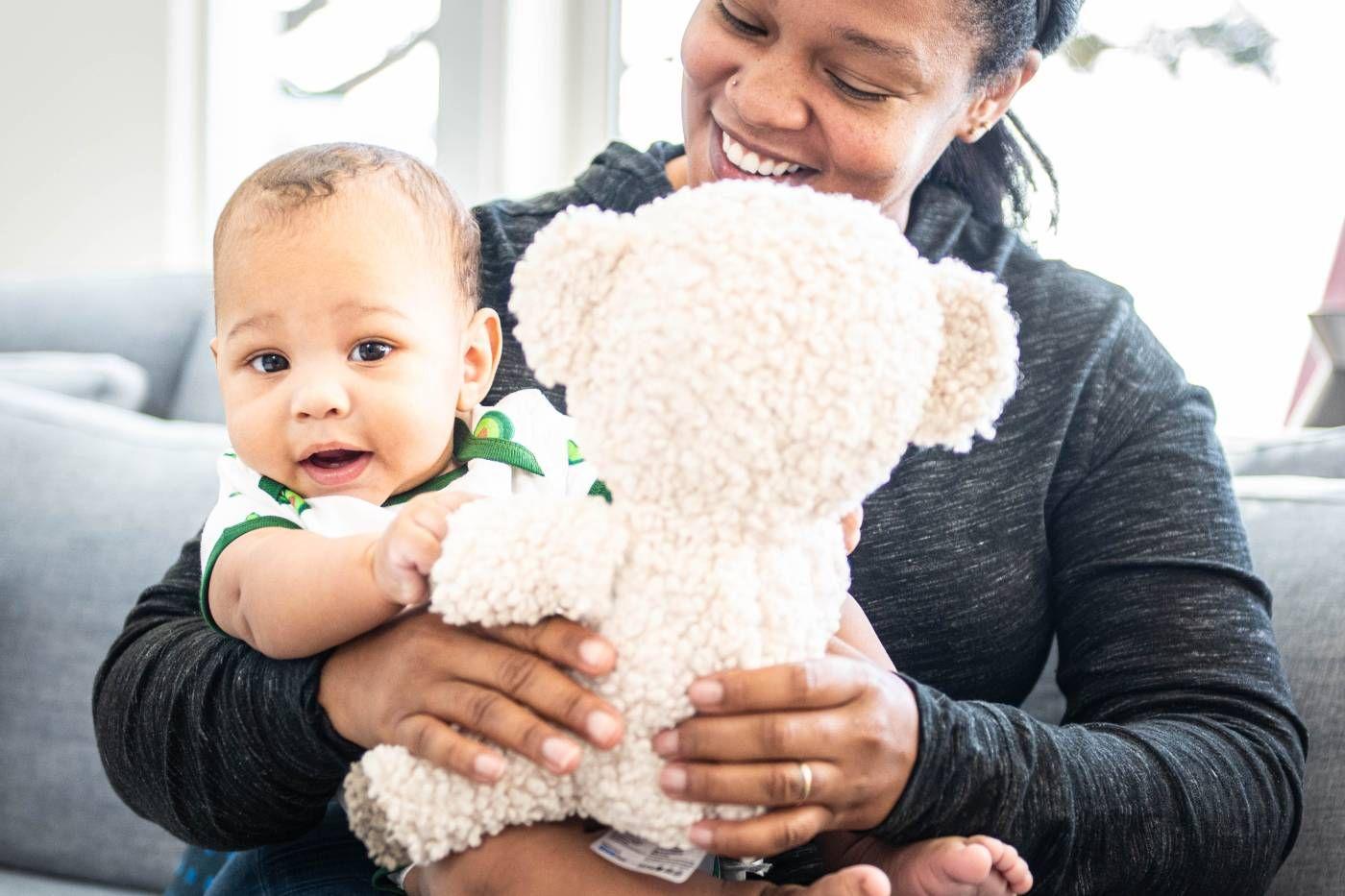TODDLER
Why Babies and Toddlers Love Their Loveys—And You Should Too!
The great sleep cue for older babies and toddlers.

Written by
Dr. Harvey Karp

SHARE THIS ARTICLE
PARENT PICKS
Bestsellers
TODDLER

Written by
Dr. Harvey Karp

SHARE THIS ARTICLE
Bestsellers
A cherished lovey (think: a cosy blankie or a soft teddy bear) can give little children much-needed comfort, confidence, and security. And, the best part, loveys are available day or night…even when Mum or Dad might not be nearby.
A lovey, also called a comfort object or transitional object, is any object that a baby or toddler bonds with in order to feel comforted and secure. We all remember Linus in the Peanuts cartoon dragging his beloved blankie behind him. And then there is Calvin had Hobbes the tiger...and Christopher Robin loved Winnie-the-Pooh, of course. These are just a few examples of loveys that children adore…but loveys are not always what you would expect. I have seen children cling to nappies, silk scarves, and all sorts of toys as their loveys. For years, my little patient Alex was 'hooked' on sleeping with his Captain Hook’s hook!
Loveys can be anything your child connects with. The only real lovey rules: Keep it out of the cot of babies for the first year of life and make sure it does not have any little pieces, like button eyes or beads in the stuffing that can be a choking risk…or get stuck up your child's nose. No matter what your little one gravitates to, the universal truth is this: Children love their loveys! And a cosy, cuddly lovey is a great sleep cue for older babies and toddlers.
The best time to introduce a lovey like a blankie or sweet stuffed bear is when your little one is around 6 months old. You will not leave the lovey in your child’s cot before their first birthday, but by introducing the lovey at 6 months, your little one will soon start to recognise it as a friend. Here are a couple of tips to help your little baby bond with their lovey:
For the first 12 months of Baby’s life, the safest sleepytime 'loveys' are dummies and anything that makes white noise, aka the 'teddy bear of sound.' But once your little one has passed the one-year mark, you can—and should—introduce a handkerchief-sized silky blanket or cuddly stuffed animal during naps and nights…but lots of parents are resistant. In fact, one medical study found that only 10.5% of families take advantage of the wonderful help that a lovey can give to their 12-month-olds. I think that may be because many parents have been intimidated by experts who warn that loveys create an 'unhealthy dependency.' So wrong!
Parents who turn their backs on loveys are missing a huge opportunity! These cuddly friends are a wonderful sleep aid, they help babies and toddlers build confidence and security, and they work wonders for easing separation anxiety, too. Loveys are also especially comforting amid times of stress, like during travel, an illness, or a parent’s absence—and for babies and toddlers with cautious, sensitive temperaments. Loveys can even help children make the emotional transition from dependence to independence. And your toddler's favourite lovey is available anytime—day or night. So, a lovey is a first friend….and a very, very good habit.
Well, babies do get attached to their lovies. In fact, research shows that young children believe their lovey possesses a special essence—meaning they love it like a beloved member of the family. But addiction makes that attachment sound negative. It is not! Many little ones rely on their loveys for help getting to sleep, but that is no different from you relying on your favourite pillow and cosy blanket for sleep. Because of this, it would be smart to always have an identical backup lovey. Losing a lovey can be traumatic for a child. Every couple of weeks, rotate your baby’s two loveys. This allows you to keep them clean and to have them both develop the same comforting feel and smell.
There is no need to choose! Both loveys and white noise are powerful sleep cues for babies and toddlers—and I recommend using both. That is why I created SNOObear, a snuggly lovey that also plays soothing and sleep-inducing white noise sounds. SNOObear plays shushing rhythms for 30- to 60-minutes to lull little ones off to sleep and settle scaries. And SNOObear goes the extra mile and 'pays attention' to your toddler, automatically turning back on with more soothing sounds if your sweet pea cries or fusses…helping parents and toddlers sleep better!
Disclaimer: The information on our site is NOT medical advice for any specific person or condition. It is only meant as general information. If you have any medical questions and concerns about your child or yourself, please contact your health provider. Breastmilk is the best source of nutrition for babies. It is important that, in preparation for and during breastfeeding, mothers eat a healthy, balanced diet. Combined breast- and bottle-feeding in the first weeks of life may reduce the supply of a mother's breastmilk and reversing the decision not to breastfeed is difficult. If you do decide to use infant formula, you should follow instructions carefully.